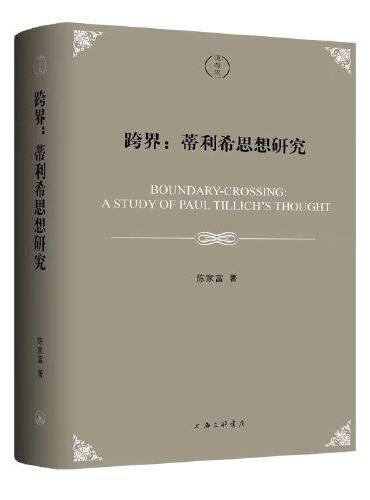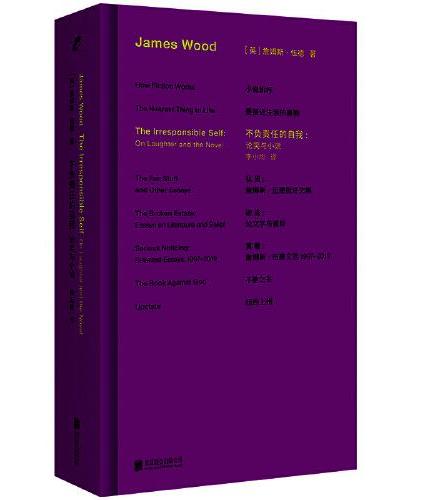新書推薦:

《
跨界:蒂利希思想研究
》
售價:NT$
500.0

《
千万别喝南瓜汤(遵守规则绘本)
》
售價:NT$
203.0

《
大模型启示录
》
售價:NT$
510.0

《
东法西渐:19世纪前西方对中国法的记述与评价
》
售價:NT$
918.0

《
养育男孩:官方升级版
》
售價:NT$
230.0

《
小原流花道技法教程
》
售價:NT$
500.0

《
少女映像室 唯美人像摄影从入门到实战
》
售價:NT$
505.0

《
詹姆斯·伍德系列:不负责任的自我:论笑与小说(“美国图书评论奖”入围作品 当代重要文学批评家詹姆斯·伍德对“文学中的笑与喜剧”的精湛研究)
》
售價:NT$
398.0
|
| 內容簡介: |
|
控制理论通常处理过程的动态行为,由微分方程来进行刻画。随着计算机控制的快速普及,出现了离散事件过程和混杂过程。离散事件过程可能是展现离散行为的 简单的过程。在离散事件系统中,状态是离散的,而且状态的转移仅仅是对离散事件的响应。在离散事件过程和计算过程之间存在微小的差异,即并行与并发,也就是说,对于多数的计算性质,如顺序、不确定性、递归和抽象等,它们是相同的。混杂理论是系统理论和计算机科学的结合体。在系统理论中,系统行为通常由微分方程来刻画,而在计算机科学中,系统行为通常由离散的原子动作及其之间的计算逻辑来刻画。在本书中,我们在真并发进程代数中引入离散事件系统和混杂系统,介绍了离散事件过程的公理化、分布式离散事件过程的公理化、混杂进程代数及其在神经网络建模中的应用以及具有位置的混杂进程代数及其在分布式/联邦神经网络建模中的应用等。
|
| 目錄:
|
Chapter 1 Introduction . . . . . . . . . . . . . . . . . . . . . . . . . . . . . . . . . . . . . . . . . . . . . . . . . . . . . . . . . 1
Chapter 2 Backgrounds . . . . . . . . . . . . . . . . . . . . . . . . . . . . . . . . . . . . . . . . . . . . . . . . . . . . . . . . . 3
2.1 Operational Semantics . . . . . . . . . . . . . . . . . . . . . . . . . . . . . . . . . . . . . . . . . . . . . . . . . . . 3
2.2 Proof Techniques . . . . . . . . . . . . . . . . . . . . . . . . . . . . . . . . . . . . . . . . . . . . . . . . . . . . . . . . .5
2.3 Truly Concurrent Process Algebra - APTC. . . . . . . . . . . . . . . . . . . . . . . . . . . . . . . 5
2.3.1 Basic Algebra for True Concurrency . . . . . . . . . . . . . . . . . . . . . . . . . . . . . . . . . . . 6
2.3.2 APTC with Left Parallel Composition . . . . . . . . . . . . . . . . . . . . . . . . . . . . . . . . . 9
2.3.3 Recursion . . . . . . . . . . . . . . . . . . . . . . . . . . . . . . . . . . . . . . . . . . . . . . . . . . . . . . . . . . 13
2.3.4 Abstraction . . . . . . . . . . . . . . . . . . . . . . . . . . . . . . . . . . . . . . . . . . . . . . . . . . . . . . . . 15
2.3.5 Placeholder. . . . . . . . . . . . . . . . . . . . . . . . . . . . . . . . . . . . . . . . . . . . . . . . . . . . . . . . .19
2.3.6 Applications . . . . . . . . . . . . . . . . . . . . . . . . . . . . . . . . . . . . . . . . . . . . . . . . . . . . . . . . 21
2.4 Truly Concurrent Process Algebra with Localities . . . . . . . . . . . . . . . . . . . . . . . 27
2.4.1 Operational Semantics with Localities . . . . . . . . . . . . . . . . . . . . . . . . . . . . . . . . 27
2.4.2 BATC with Localities . . . . . . . . . . . . . . . . . . . . . . . . . . . . . . . . . . . . . . . . . . . . . . . 31
2.4.3 APTC with Localities . . . . . . . . . . . . . . . . . . . . . . . . . . . . . . . . . . . . . . . . . . . . . . . 34
2.4.4 Recursion with Localities . . . . . . . . . . . . . . . . . . . . . . . . . . . . . . . . . . . . . . . . . . . . 39
2.4.5 Abstraction with Localities . . . . . . . . . . . . . . . . . . . . . . . . . . . . . . . . . . . . . . . . . . 41
Chapter 3 An Axiomatization of Discrete Event Processes. . . . . . . . . . . . . . . . . . . . . .46
3.1 Basic Algebra for True Concurrency - BATC . . . . . . . . . . . . . . . . . . . . . . . . . . . . 46
3.1.1 Axiom System of BATC. . . . . . . . . . . . . . . . . . . . . . . . . . . . . . . . . . . . . . . . . . . . . 46
3.1.2 Properties of BATC. . . . . . . . . . . . . . . . . . . . . . . . . . . . . . . . . . . . . . . . . . . . . . . . . 46
3.1.3 Structured Operational Semantics of BATC . . . . . . . . . . . . . . . . . . . . . . . . . . . 47
3.2 Algebra for Parallelism in True Concurrency . . . . . . . . . . . . . . . . . . . . . . . . . . . . 53
3.2.1 Parallelism as a Fundamental Computational Pattern . . . . . . . . . . . . . . . . . . 53
3.2.2 Axiom System of Parallelism . . . . . . . . . . . . . . . . . . . . . . . . . . . . . . . . . . . . . . . . .55
3.2.3 Properties of Parallelism. . . . . . . . . . . . . . . . . . . . . . . . . . . . . . . . . . . . . . . . . . . . .56
3.2.4 Structured Operational Semantics of Parallelism . . . . . . . . . . . . . . . . . . . . . . .58
3.2.5 Encapsulation . . . . . . . . . . . . . . . . . . . . . . . . . . . . . . . . . . . . . . . . . . . . . . . . . . . . . . 63
3.3 Recursion . . . . . . . . . . . . . . . . . . . . . . . . . . . . . . . . . . . . . . . . . . . . . . . . . . . . . . . . . . . . . . . 67
3.3.1 Guarded Recursive Specifications . . . . . . . . . . . . . . . . . . . . . . . . . . . . . . . . . . . . .68
3.3.2 Recursive Definition and Specification Principles. . . . . . . . . . . . . . . . . . . . . . .69
3.3.3 Approximation Induction Principle . . . . . . . . . . . . . . . . . . . . . . . . . . . . . . . . . . . 72
3.4 Silent Step and Abstraction . . . . . . . . . . . . . . . . . . . . . . . . . . . . . . . . . . . . . . . . . . . . . 77
3.4.1 Guarded Linear Recursion . . . . . . . . . . . . . . . . . . . . . . . . . . . . . . . . . . . . . . . . . . . 77
3.4.2 Algebraic Laws for the Silent Step . . . . . . . . . . . . . . . . . . . . . . . . . . . . . . . . . . . .78
3.4.3 Abstraction . . . . . . . . . . . . . . . . . . . . . . . . . . . . . . . . . . . . . . . . . . . . . . . . . . . . . . . . 81
Chapter 4 An Axiomatization of Distributed Discrete Event Processes . . . . . . . . . 87
4.1 BATC with Static Localities . . . . . . . . . . . . . . . . . . . . . . . . . . . . . . . . . . . . . . . . . . . . 87
4.1.1 Axiom System of BATC with Static Localities. . . . . . . . . . . . . . . . . . . . . . . . .87
4.1.2 Properties of BATC with Static Localities . . . . . . . . . . . . . . . . . . . . . . . . . . . . 88
4.1.3 Structured Operational Semantics of BATC with Static Localities. . . . . . .89
4.2 APTC with Static Localities . . . . . . . . . . . . . . . . . . . . . . . . . . . . . . . . . . . . . . . . . . . . 94
4.2.1 Properties of Parallelism with Static Localities . . . . . . . . . . . . . . . . . . . . . . . . 97
4.2.2 Structured Operational Semantics of Parallelism with
Static Localities . . . . . . . . . . . . . . . . . . . . . . . . . . . . . . . . . . . . . . . . . . . . . . . . . . 100
4.2.3 Encapsulation with Static Localities . . . . . . . . . . . . . . . . . . . . . . . . . . . . . . . . . 105
4.3 Recursion with Static Localities . . . . . . . . . . . . . . . . . . . . . . . . . . . . . . . . . . . . . . . . 109
4.3.1 Guarded Recursive Specifications with Static Localities . . . . . . . . . . . . . . . 110
4.3.2 Recursive Definition and Specification Principles with
Static Localities . . . . . . . . . . . . . . . . . . . . . . . . . . . . . . . . . . . . . . . . . . . . . . . . . . 112
4.3.3 Approximation Induction Principle with Static Localities. . . . . . . . . . . . . .114
4.4 Silent Step and Abstraction with Static Localities . . . . . . . . . . . . . . . . . . . . . . 118
4.4.1 Guarded Linear Recursion with Static Localities. . . . . . . . . . . . . . . . . . . . . .119
4.4.2 Algebraic Laws for the Silent Step with Static Localities . . . . . . . . . . . . . . 120
4.4.3 Abstraction with Static Localities . . . . . . . . . . . . . . . . . . . . . . . . . . . . . . . . . . . 123
Chapter 5 Hybrid Process Algebra . . . . . . . . . . . . . . . . . . . . . . . . . . . . . . . . . . . . . . . . . . . .128
5.1 Truly Concurrent Semantics. . . . . . . . . . . . . . . . . . . . . . . . . . . . . . . . . . . . . . . . . . . .128
5.2 Hybrid BATC . . . . . . . . . . . . . . . . . . . . . . . . . . . . . . . . . . . . . . . . . . . . . . . . . . . . . . . . . 132
5.2.1 Axiom System of Hybrid BATC. . . . . . . . . . . . . . . . . . . . . . . . . . . . . . . . . . . . .132
5.2.2 Properties of Hybrid BATC. . . . . . . . . . . . . . . . . . . . . . . . . . . . . . . . . . . . . . . . .134
5.2.3 Structured Operational Semantics of Hybrid BATC. . . . . . . . . . . . . . . . . . .136
5.3 Hybrid APTC . . . . . . . . . . . . . . . . . . . . . . . . . . . . . . . . . . . . . . . . . . . . . . . . . . . . . . . . . 138
5.3.1 Properties of Parallelism of Hybrid APTC . . . . . . . . . . . . . . . . . . . . . . . . . . . 141
5.3.2 Structured Operational Semantics of Parallelism of Hybrid APTC . . . . . 144
5.3.3 Encapsulation of Hybrid APTC. . . . . . . . . . . . . . . . . . . . . . . . . . . . . . . . . . . . . 145
5.4 Recursion of Hybrid APTC . . . . . . . . . . . . . . . . . . . . . . . . . . . . . . . . . . . . . . . . . . . . 148
5.4.1 Guarded Recursive Specifications . . . . . . . . . . . . . . . . . . . . . . . . . . . . . . . . . . . 148
5.4.2 Recursive Definition and Specification Principles of Hybrid APTC . . . . . 150
5.4.3 Approximation Induction Principle of Hybrid APTC. . . . . . . . . . . . . . . . . .150
5.5 Silent Step and Abstraction of Hybrid APTC . . . . . . . . . . . . . . . . . . . . . . . . . . 152
5.5.1 Guarded Linear Recursion of Hybrid APTC. . . . . . . . . . . . . . . . . . . . . . . . . .152
5.5.2 Algebraic Laws for the Silent Step of Hybrid APTC . . . . . . . . . . . . . . . . . . 153
5.5.3 Abstraction . . . . . . . . . . . . . . . . . . . . . . . . . . . . . . . . . . . . . . . . . . . . . . . . . . . . . . . 154
5.6 Application of Hybrid APTC in Modelling Neural Networks . . . . . . . . . . . . 155
5.6.1 Modelling of Neurons . . . . . . . . . . . . . . . . . . . . . . . . . . . . . . . . . . . . . . . . . . . . . . 156
5.6.2 Modelling of Neural Networks. . . . . . . . . . . . . . . . . . . . . . . . . . . . . . . . . . . . . . .158
Chapter 6 Hybrid Process Algebra with Localities . . . . . . . . . . . . . . . . . . . . . . . . . . . . 161
6.1 Locality Semantics . . . . . . . . . . . . . . . . . . . . . . . . . . . . . . . . . . . . . . . . . . . . . . . . . . . . . 161
6.2 Hybrid BATC with Localities . . . . . . . . . . . . . . . . . . . . . . . . . . . . . . . . . . . . . . . . . . 165
6.2.1 Axiom System of Hybrid BATC with Localities . . . . . . . . . . . . . . . . . . . . . . 165
6.2.2 Properties of Hybrid BATC With Localities . . . . . . . . . . . . . . . . . . . . . . . . . .166
6.2.3 Structured Operational Semantics of Hybrid BATC with Localities . . . . 168
6.3 Hybrid APTC with Localities . . . . . . . . . . . . . . . . . . . . . . . . . . . . . . . . . . . . . . . . . . 171
6.3.1 Properties of Parallelism of Hybrid APTC with Localities . . . . . . . . . . . . . 175
6.3.2 Structured Operational Semantics of Parallelism of Hybrid APTC
with Localities. . . . . . . . . . . . . . . . . . . . . . . . . . . . . . . . . . . . . . . . . . . . . . . . . . . .178
6.3.3 Encapsulation of Hybrid APTC with Localities. . . . . . . . . . . . . . . . . . . . . . .179
6.4 Recursion of Hybrid APTC with Localities . . . . . . . . . . . . . . . . . . . . . . . . . . . . . 182
6.4.1 Guarded Recursive Specifications of Hybrid APTC with Localities . . . . . 183
6.4.2 Recursive Definition and Specification Principles of Hybrid APTC
with Localities. . . . . . . . . . . . . . . . . . . . . . . . . . . . . . . . . . . . . . . . . . . . . . . . . . . .184
6.4.3 Approximation Induction Principle of Hybrid APTC with Localities . . . 185
6.5 Silent Step and Abstraction of Hybrid APTC with Localities . . . . . . . . . . . 186
6.5.1 Guarded Linear Recursion of Hybrid APTC with Localities . . . . . . . . . . . 187
6.5.2 Algebraic Laws for the Silent Step of Hybrid APTC with Localities . . . . 188
6.5.3 Abstraction of Hybrid APTC with Localities . . . . . . . . . . . . . . . . . . . . . . . . . 189
6.6 Application of Hybrid APTC with Localities in Modelling
Distributed/Federated Neural Networks . . . . . . . . . . . . . . . . . . . . . . . . . . . . . . . . 190
6.6.1 Modelling of Distributed/Federated Neurons . . . . . . . . . . . . . . . . . . . . . . . . . 190
6.6.2 Modelling of Distributed/Federated Neural Networks . . . . . . . . . . . . . . . . . 192
Bibliography . . . . . . . . . . . . . . . . . . . . . . . . . . . . . . . . . . . . . . . . . . . . . . . . . . . . . . . . . . . . . . . . . . . 194
|
|










